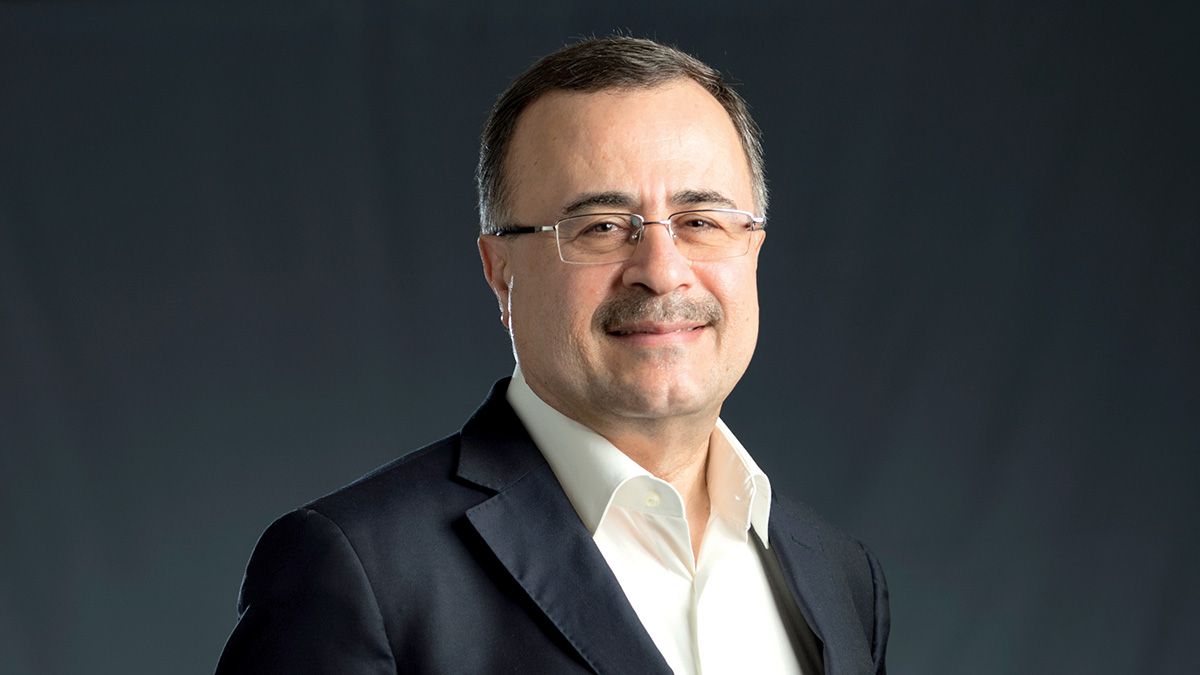CEO At Nikkei
CEO at Nikkei: Aramco’s young leaders key to its bright future

Global November 17, 2021 - By
Amin Nasser touches on a wide variety of topics at global forum, from young employees and Saudi Vision 2030 to net-zero ambitions and green technologies.
“My personal passion” is how president and CEO Amin Nasser described preparing the company’s young workforce for their, and the company’s future ambitions.
Speaking via video link at the Nikkei Global Management Forum in Tokyo last week, Nasser was quick to point out that young employees in Aramco are front and center of the company’s future.
“We have a lot of young people, preparing them for the company, and in the other direction, preparing the company for them, are my personal passion.”
The forum brings together some of the world’s most successful business executives to discuss management philosophies, corporate strategies, and the latest global trends in management.
And listeners were left in no doubt to the key skill the company sees as crucial for young leaders.
If you pick one aspect of a good corporate manager, when we look at them and evaluate them, it would be people-related skills.
— Amin Nasser
Attendees heard how Aramco’s young employees make up between 60%-70% of the workforce, and the CEO explained the crucial role the Young Leaders Advisory Board plays in ensuring the aspirations of young employees are heard by senior management.
“They are a board of young people that have better connectivity with our young employees that will lead and operate our company in the future — and understanding how they think, what motivates them and what doesn’t, are important matters.
“They help us as executive management to identify their needs, aspirations, and desires.”

Vision 2030 powers forward
The CEO told the forum attendees that Aramco was playing a crucial role in supporting the Kingdom’s Vision 2030, which seeks to develop different sectors for growth in the Kingdom.
Commenting on making the Kingdom business friendly for investment in the private sector, he noted the crucial role Aramco is playing.
“We are creating a lot of joint ventures in the Kingdom with our partners, capitalizing on a lot of the regulation that’s happening and the ecosystem that has completely shifted in the Kingdom.”
Nasser told listeners that the Kingdom had excellent infrastructure and connectivity within the region.

‘Historical announcement’
In his opening comments, Nasser said how excited he was about the historic announcement by His Royal Highness the Crown Prince about the Kingdom reaching net-zero in terms of emissions by 2060.
“This is a historical announcement. It means a lot to all of us, and it will create the right platforms for Aramco and other entities, within the Kingdom and globally, to follow suit.”
Noting this announcement comes from the biggest hydrocarbon producer in the world, Nasser went on to observe that Aramco was also excited to announce that the company will achieve an ambition of being net-zero from its operations by 2050.
Asked by the moderator to comment more broadly on the energy market, with the oil price at its highest level in seven years, Nasser observed that demand is healthy.
“Estimates vary, but several analyses showed that switching from gas to oil may reach half a million barrels or higher this winter. According to the IEA, the expected 2021 fourth quarter demand is going to be close to 99 million barrels per day. If you look at next year, we will be past the pre-COVID-19 levels, we will be above 100 million barrels,” Nasser said.
“With many international oil companies seeking to downsize their oil portfolios and some producing countries struggling to revive upstream investment, Aramco stands to benefit and gain in market share, as it embarks on raising its crude production capacity from 12 million barrels per day (bpd) to a world leading 13 million bpd by 2027.”
A multi-speed transition
Addressing the energy transition, Nasser noted that from now until 2050, there are going to be an estimated 2 billion more energy users in the world and population growth would be led by developing countries, where energy transition will be much slower, “Therefore, I expect oil and gas demand will be healthy for many decades to come.”
“We should expect a multi-speed transition … because of the different needs of the more and less developed countries and their unique situations, one-size-fits-all solutions are not appropriate. For example, the transition blueprint for Europe, which might be able to afford expensive solutions, is unlikely to be suitable for developing countries.”
Inclusive energy policies
“I believe alternatives such as renewables and electric vehicles are not yet ready to fulfill the growing energy needs of rising world population … the world needs [a green and clean] energy policy that is more inclusive,” he said.
“The pace of that transition will take time, and as such the need for gasoline and diesel will continue.”
Nasser noted that the internal combustion engine would not be the same in 10 and 20 years from now compared to what we have today in the market.
“It’s a continuous improvement … [and] ... this needs to go in parallel until this transition takes place … [which] … is long and complex.”
Accordingly, Nasser said, oil and gas will continue to be Aramco’s key businesses for a long time to come.
Reducing our carbon footprint
“We will continue our efforts to further reduce our carbon footprint of oil and gas. Efforts to reduce the company’s carbon footprint will be executed with a combination of strategies, including carbon capture, gas to hydrogen, liquid to chemical, and more,” Nasser said.
The CEO told his audience that the company had been working on that strategy with its board of directors for more than a year to reduce emissions and meet the ambition of net-zero by 2050.
“We will use a combination of nature-based solutions, and carbon capture and sequestration … to achieve gas to hydrogen; blue hydrogen will require carbon capture and sequestration. Liquid to chemical will be a major part of our business. [Also] … noncombustible uses for oil [including] nonmetallics for construction, for auto industries and for other uses of nonmetallics globally that will increase and add value to our products.
“If you look at our upstream emissions, intensities for carbon dioxide and methane, it’s one of the lowest in the industry. That did not come because our hydrocarbon is different. It is all because of our investment and strategy and what we do to reduce our carbon footprint. Our commitment is for Scope 1 and Scope 2, which is what we emit from our operations and what we receive from the utility side in terms of emissions,” Nasser said.



